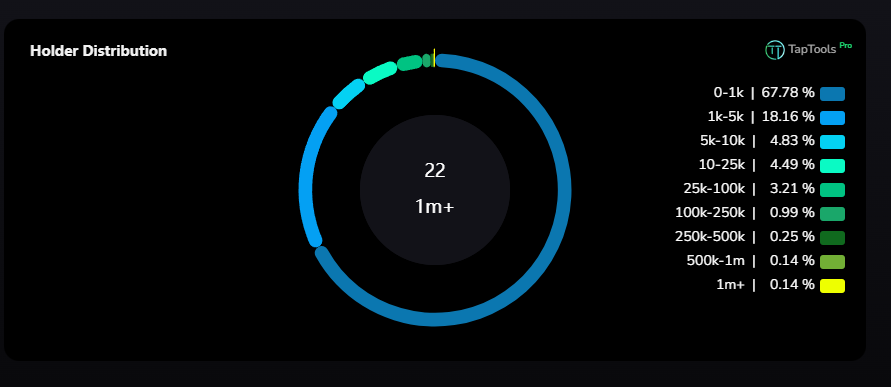Recognising Autism And ADHD: Are You One Of The 3 Million+ Brits?

Table of Contents
Recognising Autism in Adults and Children
Autism Spectrum Disorder (ASD) is a lifelong neurodevelopmental condition characterized by differences in social communication and interaction, and the presence of restricted, repetitive patterns of behaviour, interests, or activities. Let's examine the common symptoms, differing slightly between children and adults.
Common Autism Symptoms in Children: Early Signs of Autism
Early identification of autism in children is crucial for effective intervention. Look out for:
- Delayed language development: Difficulty speaking, understanding language, or engaging in conversations. A child might use few words or have trouble forming sentences at the expected age.
- Repetitive behaviors and routines: Insistence on sameness, repetitive movements (like hand flapping), and strong attachments to specific objects or routines. A sudden change in routine can cause significant distress.
- Difficulties with social interaction and communication: Avoiding eye contact, struggling to understand social cues, and having difficulty sharing interests with others. They may prefer solitary play.
- Sensory sensitivities: Extreme reactions to certain sounds, textures, smells, tastes, or lights. A child might cover their ears at loud noises or be overly sensitive to touch.
For example, a child might become intensely distressed if their toys are not arranged in a specific order, or refuse to eat food with a certain texture. These are just examples – early signs of autism vary widely. Early intervention and a timely child autism diagnosis are key.
Common Autism Symptoms in Adults: Late Diagnosis Autism
While autism in adults often goes undiagnosed for many years, certain characteristics may persist or emerge differently:
- Social isolation or difficulty maintaining relationships: Challenges forming close relationships or understanding social dynamics. They may struggle to read social cues or maintain meaningful conversations.
- Challenges with understanding non-verbal cues: Difficulty interpreting body language, facial expressions, or tone of voice. Misunderstandings in communication are common.
- Difficulty with flexible thinking and adapting to change: Rigid thinking patterns and a strong preference for routines can make adapting to unexpected situations challenging.
- Special interests or obsessions: Intense focus on specific topics or hobbies, sometimes to the exclusion of other activities.
- Sensory overload or under-responsiveness: Experiencing discomfort or distress from sensory stimuli (sensory overload) or having a reduced response to sensory input (under-responsiveness).
Many adults seek a late diagnosis autism only after noticing the challenges they face in their relationships, work, or daily life. Adult autism symptoms can manifest differently than in childhood.
Seeking Professional Help for Autism: Autism Diagnosis UK
Early intervention is key to supporting autistic individuals, making a child autism diagnosis or adult autism diagnosis as early as possible vital. The process often begins with a GP referral to a specialist for assessment. Organizations like the National Autistic Society provide invaluable resources and support throughout the autism diagnosis UK process. They also offer guidance and help find autism support groups UK, facilitating connection with other families or individuals. Knowing where to find an autism assessment is a crucial first step.
Recognising ADHD in Adults and Children
Attention-Deficit/Hyperactivity Disorder (ADHD) is a neurodevelopmental disorder characterized by persistent inattention, hyperactivity, and impulsivity. Again, manifestations differ between children and adults.
Common ADHD Symptoms in Children: Symptoms of ADHD in Children
Identifying ADHD in children can be challenging, but key symptoms include:
- Hyperactivity: Excessive fidgeting, restlessness, difficulty staying seated, and constant movement.
- Impulsivity: Interrupting conversations, acting without thinking, difficulty waiting their turn, and blurting out answers.
- Inattention: Difficulty focusing, easily distracted, trouble completing tasks, and being forgetful.
A child with ADHD might struggle to sit still during class, constantly fidget with objects, or interrupt conversations repeatedly. A child ADHD diagnosis is essential for appropriate support.
Common ADHD Symptoms in Adults: Adult ADHD Symptoms
ADHD in adults often presents differently than in children. Hyperactivity might manifest as restlessness or difficulty relaxing, while inattention translates into:
- Difficulty with organization and time management: Struggling to plan, prioritize, and meet deadlines.
- Problems with focus and concentration: Difficulty sustaining attention on tasks, easily distracted, and struggling to complete projects.
- Impulsivity and emotional regulation challenges: Acting on impulse, difficulty controlling emotions, and impulsive decision-making.
- Restlessness and difficulty relaxing: Constant internal restlessness and an inability to relax.
An adult ADHD diagnosis is often sought due to persistent challenges in work, relationships, or daily life. Many adults with ADHD only receive a diagnosis in adulthood.
Seeking Professional Help for ADHD: ADHD Diagnosis UK
The process of obtaining an ADHD diagnosis UK is similar to that of autism. It usually involves a GP referral to a specialist. Various treatment options are available, including medication and therapy. Support networks and resources are crucial for managing ADHD effectively, addressing issues such as ADHD treatment UK. Finding ADHD support groups can greatly improve the quality of life for those affected.
The Overlap Between Autism and ADHD: ADHD and Autism
It's important to recognise that ADHD and autism can co-occur frequently, a condition known as comorbidity or autism and ADHD comorbidity. This dual diagnosis presents unique challenges in diagnosis and treatment, as symptoms can overlap significantly. Understanding the specific characteristics of each condition is vital for appropriate intervention.
Conclusion: Taking the Next Steps Towards Understanding and Support
Recognising the signs and symptoms of autism and ADHD in both adults and children is crucial for early intervention and support. This article has outlined common indicators of both conditions, highlighting the importance of seeking professional help for diagnosis and access to resources like those offered by Autism UK. Remember, early recognition and support can significantly improve the quality of life for those affected. Are you concerned that you or a loved one might have autism or ADHD? Don't hesitate to seek further information and professional help. Early recognition and support can make a significant difference in quality of life. Learn more about recognising autism and ADHD today!

Featured Posts
-
 Realni Geroi 10 Aktori Spasili Khora Izvn Kamerata
May 13, 2025
Realni Geroi 10 Aktori Spasili Khora Izvn Kamerata
May 13, 2025 -
 Investigation Into David Alan Grier Funeral Home Following Elsbeth Sneak Peek
May 13, 2025
Investigation Into David Alan Grier Funeral Home Following Elsbeth Sneak Peek
May 13, 2025 -
 Cooper Flaggs Impact Analyzing Teams Best Positioned For The Number One Pick
May 13, 2025
Cooper Flaggs Impact Analyzing Teams Best Positioned For The Number One Pick
May 13, 2025 -
 Courtroom Drama Tory Lanezs Heated Exchange With His Legal Team
May 13, 2025
Courtroom Drama Tory Lanezs Heated Exchange With His Legal Team
May 13, 2025 -
 Soaring Temperatures In Delhi Prompt Government Heatstroke Advisory
May 13, 2025
Soaring Temperatures In Delhi Prompt Government Heatstroke Advisory
May 13, 2025
